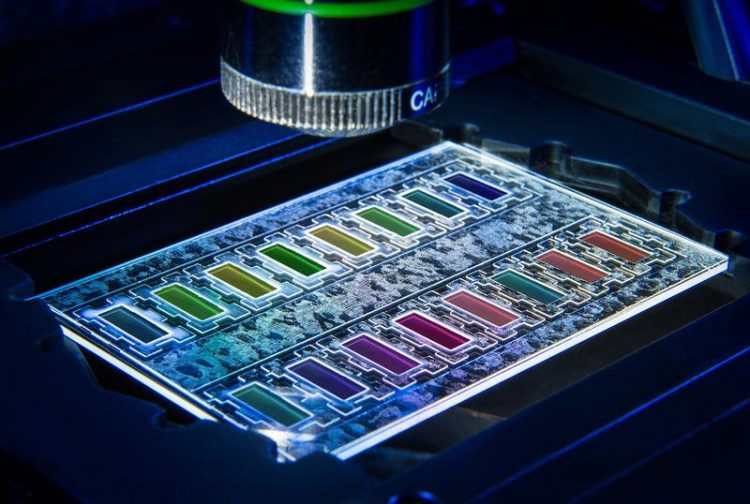Faster resistance analysis for patients with blood poisoning

A new technique for analyzing antibiotic resistance. Volker Lannert, Fraunhofer FIT
For patients with blood poisoning, also known as septicemia, every second counts. Doctors who suspect a patient has sepsis start them on broad-spectrum antibiotics right away, but the antibiotics don’t always have the desired effect – for instance if the bacteria are resistant to the medicines used.
Identifying the pathogens in the lab and investigating their potential resistance routinely takes between 60 and 100 hours. This is time the patient simply doesn’t have – most cases end fatally within around 48 hours. Blood poisoning accounts for 60,000 deaths a year in Germany alone.
Test results in nine hours
In future, this analysis could take much less time – saving many patients’ lives. Once doctors know whether the bacteria are resistant to certain substances, they can treat the patient with a targeted antibiotic that reliably kills off the pathogen.
This is possible thanks to a technology developed by the researchers at the Fraunhofer Institutes for Applied Information Technology FIT and for Laser Technology ILT in collaboration with the Uniklinikum Aachen and numerous industry partners. “Our testing method yields results in just nine hours,” says Professor Harald Mathis, department head at Fraunhofer FIT.
Which antibiotic?
So how are researchers now able to analyze the bacteria in a blood sample up to ten times faster than before? “We’ve developed a miniaturized system with a patented optical design,” reveals Mathis. The first step is to mark the pathogens indicative of septicemia, so that they glow when exposed to laser light. This then allows the researchers to assess the amount of bacteria present in the blood.
In the next stage of the process, the bacteria are separated from the blood and channeled into a series of miniaturized dishes. Each contains a culture medium that includes a specific antibiotic. A second optical system complete with the necessary analysis software observes and precisely documents how the bacteria develop.
Then comes the key step: algorithms analyze the pictures taken of the bacteria and extrapolate the growth curve, meaning the researchers can see within hours whether the respective medicine is working or whether the bacteria are resistant to it and spreading rapidly. Essentially, the growth monitor software is able to calculate and predict how bacteria will develop over time.
It does so by analyzing both the extent of the bacterial growth – which provides a one-to-one indication of the number of bacteria present – and the ratio of living to dead bacteria. In short: This tells researchers which antibiotic will be most effective in killing off the bacteria – and help the patient the most.
Researchers will be showcasing a prototype of the growth monitor at the Biotechnica trade show in Hanover from October 6-8 (Hall 9, booth C34).
Media Contact
More Information:
http://www.fraunhofer.deAll latest news from the category: Life Sciences and Chemistry
Articles and reports from the Life Sciences and chemistry area deal with applied and basic research into modern biology, chemistry and human medicine.
Valuable information can be found on a range of life sciences fields including bacteriology, biochemistry, bionics, bioinformatics, biophysics, biotechnology, genetics, geobotany, human biology, marine biology, microbiology, molecular biology, cellular biology, zoology, bioinorganic chemistry, microchemistry and environmental chemistry.
Newest articles

NASA: Mystery of life’s handedness deepens
The mystery of why life uses molecules with specific orientations has deepened with a NASA-funded discovery that RNA — a key molecule thought to have potentially held the instructions for…

What are the effects of historic lithium mining on water quality?
Study reveals low levels of common contaminants but high levels of other elements in waters associated with an abandoned lithium mine. Lithium ore and mining waste from a historic lithium…

Quantum-inspired design boosts efficiency of heat-to-electricity conversion
Rice engineers take unconventional route to improving thermophotovoltaic systems. Researchers at Rice University have found a new way to improve a key element of thermophotovoltaic (TPV) systems, which convert heat…



